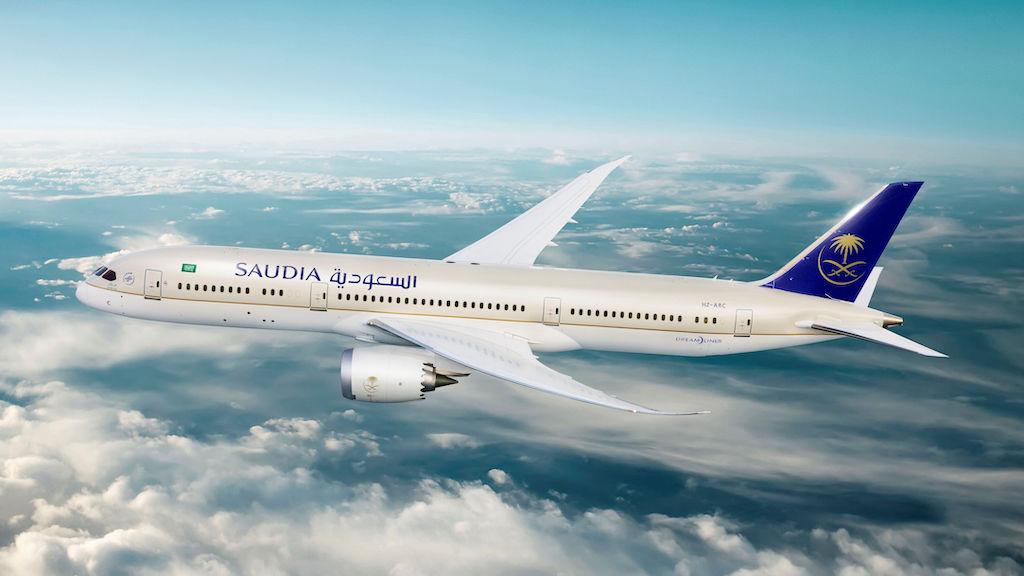
With large orders for new aircraft in place, Saudi Arabia is setting out plans to become an aviation superpower. But how will it look to grow its commercial aftermarket?
Last week’s announcement of a new Saudi Arabian national airline and its large order for more than 70 aircraft reaffirmed the country’s efforts to establish itself as an aviation hub to compete with its Gulf rivals.
State-backed Riyadh Air will be the country’s second flag carrier after Saudia Airlines and has commitments for up to 72 Boeing-manufactured aircraft, comprised of a firm order for 39 787-9 aircraft with options for 33 additional 787s.
Naturally, the airline’s targets are ambitious. By 2030, it plans to fly to more than 100 destinations globally and says up to 200,000 jobs will be created both directly and indirectly by the airline, which hopes to commence flying in the next two years.
Established carrier Saudia Airlines is also planning on large fleet expansions with an order placed last week for up to 49 787 aircraft, comprised of 39 firm orders and 10 options.
Low-cost carrier Flynas is also in the process of modernizing its fleet with a series of Airbus A320neo deliveries while Saudia-owned Flyadeal has been operating for more than five years with a sizeable new aircraft fleet with future commitments for more A320neo aircraft.
An obvious motivation is competing with the likes of United Arab Emirates and Qatar—home to the Middle East region’s three biggest airlines of Emirates, Etihad and Qatar Airways—and neighboing carriers such as Turkish Airlines, which also has established a strong market share.
Saudi Arabia is on a global investment drive with the aim of attracting 100 million tourists by 2030. At the behest of Crown Prince Mohammed bin Salman Al Saud, this has led to heavy investment in tourism and transport infrastructure, notably its planned expansion of Riyadh Airport. Ultimately, it hopes to modernize its economy and diversify away from its reliance on petroleum production, its biggest GDP contributor.
With the expectation of new aircraft entering the Saudi Arabian commercial fleet in large volumes, more MRO work will naturally be generated in the country and that could mean a more ambitious play by the country in the commercial aftermarket. Several conference panelists at last month’s MRO Middle East event in Dubai predicted Saudi Arabia will more than likely play a pivotal role in the future of the region’s MRO segment.
At the center of this is Saudia Airlines Engineering Industries (SAEI), the MRO arm of its existing flag carrier, which has been steadily building up momentum over the past few years. The planned expansion of its purpose-built MRO village at King Abdulaziz International Airport in Jeddah last year will add significant capacity, with up to 11 hangars scheduled to be constructed with volume for four widebodies simultaneously.
SAEI’S CEO Fahd Cynndy projected to regional media last year that the Jeddah site could generate up to $2.7 billion in revenues over the next decade, with demand set to grow in the country. But to do this, there will need to be heavy investment across Saudi Arabia’s commercial aftermarket and the possibility of attracting established companies from outside of the region to set up business or partnerships in the country is likely.
SAEI established a gradual program of adding new capabilities through several partnerships with the likes of Lufthansa Technik, Collins Aerospace and Thales in recent times. With plans to grow as a third-party MRO provider, the company could look to add further capability to its existing maintenance offerings while also aiding the efforts by the country to grow its aviation workforce pipeline domestically.
Based on discussions at last month’s MRO Middle East event in Dubai, any addition of further capability could be welcomed by the Middle East region. While home to some established MROs certainly not lacking in ambition and with the investment to prove it, the Middle East remains under-served in terms of MRO shop capability stretching across airframes, engines and components repair services.
This shortfall is consistently cited as one of the region’s biggest future hurdles and addressing this will likely be crucial to meeting the Middle East’s long-term growth objectives.





